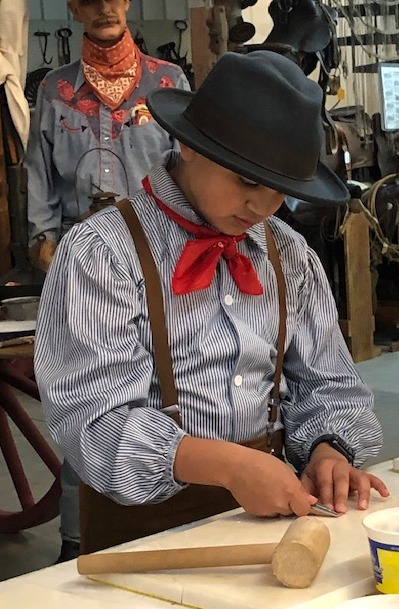

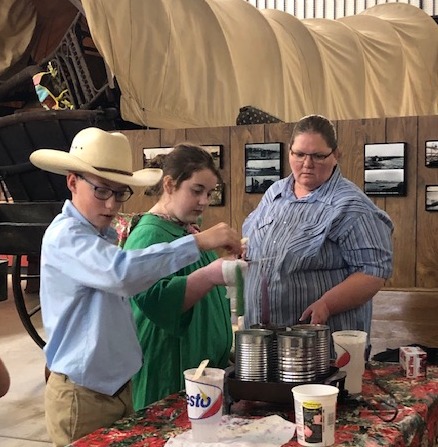








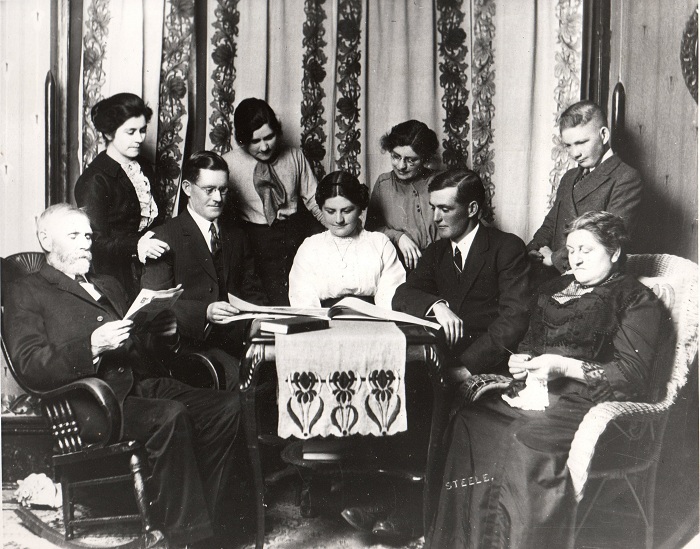
For judicial purposes, this part of the country was connected with Dodge City, and F.L. Pierce was appointed justice of the peace in case something should happen that would require court proceedings. Pierce had come out from Iowa and located on a homestead a quarter of a mile west from Mrs. Davies. He and his wife didn’t escape any of the hardships that their neighbors were enduring, but they, like the rest, made the best of the hard times, stayed with their claim, proved it up and got their patent from Uncle Sam.

Everyone seemed peaceable, and living on their claims without any fear, never locking their homes when leaving or their doors at night. It would seem they were free from anything that would call for fear. But one night a change came. The Santa Fe railroad brought in a gang of men together with their boarding cars in which they ate and slept. Their work was to replace the iron rails with steel. These men would spend the evenings in any place of business that was open.
One evening, a group of them gathered in Mr. Brackett’s store. For some reason, not made known, one man made an attack on a man sitting in a chair. He had a knife his his hand just ready to strike the man in the chair, when the man drew a revolver, fired, hitting him in the head, causing instant death. There was a young man from Lakin in the room at the time, a nice boy, a harmless chap by the name of James Boyle. They called him “Prairie Dog Jim.” So when the man fell to the floor, Jim ran to help him if he could and in trying to help he got blood all over his hands. About the time someone thought papers should be gotten out against the man who fired the shot, so they told Jim to go find Mr. Pierce, the justice of the peace, and bring him to town.
On the way to where Mr. Pierce lived, Jim had to pass the home of Mrs. Davies. When he reached her home he thought he would stop and get his directions a little better, so he rapped at her door, as usual she called, “Who is there?” “Prairie Dog Jim,” was the reply. Well, no one was afraid of Jim so she opened the door and there he stood, as it looked to her he was blood all over, and she became frightened, and in his excitement he kept trying to tell her what had happened, until he seemed beside himself. And she was really frightened by now.
She asked, “What do you want?” He said, “Mr. Pierce, the justice of the peace.” She replied, “He lives up west – go on.” And she locked her door, went to bed, but not to sleep. She was afraid he would come back and she didn’t know how much of his story was truth. He might be the murderer and come back to do her harm because she had seen him in that condition, and so her thoughts continued until the rays of light began to lighten the eastern sky.
It was not all fun by any means for the pioneers to obtain a home even if it was given to them by their Uncle Sam.
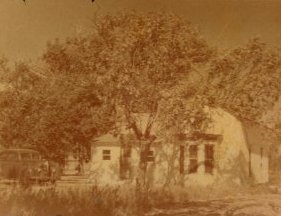
People coming from the east to Western Kansas in the late 1870s and early 1880s felt sure they had reached a land, where, by labor, they could turn it into a Paradise. As they looked across the rolling plains for miles and miles with not a mountain or hill to obscure their sight and away in the distance they could often see herds of buffalo and antelope as well as cattle and wild horses browsing the grass and as the song goes, “The skies are not cloudy all day.” But things did not remain in this condition for long.
Hunters came in and killed the buffalo by the score, sometimes taking only the hide to sell, leaving the rest of the animal for the coyotes and other wild animals to eat. Whole herds of wild horses were walking until they became so weary and footsore that they could be driven into a corral and captured and sold.
When these newcomers were informed that the United States Government would give each settler of age 21, 160 acres of land as a homestead if they would plant and cultivate a certain number of acres of land, build a house and live on it for five years, “My, how wonderful,” they thought. Why, it was just so grand! To get a home for so little.
Mrs. Davis and family who had come out from Chicago recently was one of these and they secured a nice homestead one-half of a mile west of Lakin. They built a little two room house, but there was no water or fuel, except as they picked up coal along the railroad track, go to the river a mile away and gather wood or picked up buffalo chips where were quite plentiful. Carrying water half a mile was a hard task, so she had a man about 25 years old, single, come and dig a well. He turned out to be quite an interesting character to her. His name was Jerry Curran and he said he was from Hot Springs, Va., the same place Mrs. Davies had spent her girlhood days.
Mr. Curran dug the well and got a nice supply of water, that was still there as long as Mrs. Davies knew anything about the place. Next, being anxious to live up to the regulations of the government, she planted some potatoes but they failed to come up. It was so dry. Just no rain at all. In the fall she thought she would like to see just what the potatoes looked like so she found they had never as much as sprouted.
Those poor settlers found they paid price enough for their land by the time the five years had ended.
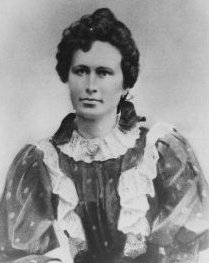
Our great state of Kansas recently celebrated 161 years of statehood. Native Americans inhabited the region that is now Kansas for thousands of years before the first white man appeared. Spanish conquistador Francisco Vasquez de Coronado marched north from Mexico in search of the Seven Golden Cities of Gold in 1540. In New Mexico, he was told of the Land of Quivira, and he turned east and north in search of the fabled place of wealth. By the summer of 1541, 80 years before the Pilgrims landed at Plymouth Rock, Coronado had reached the Arkansas River in Kansas, crossing near the area which is now known as Dodge City.
Coronado returned to New Mexico. Father Juan de Padilla, a priest who had accompanied him, returned to Kansas the following year in hopes to bring Christianity to the Indians but was killed. The exact place of his death is unknown. For a time, Spain, France and England all had claims on Kansas. The English did nothing to further their claim. French claims were ceded to Spain in 1762, but title was returned to France in 1800. The US purchased the Louisiana Territory from France in 1803.
Kansas was organized as a territory in May of 1854, but the battle for statehood was intense from 1855 to 1861. Bloody battles between free-state and pro-slavery forces led to the nickname, “Bleeding Kansas.” After three unsuccessful constitutional conventions, a fourth took place in Wyandotte in July 1859 which proved successful. Free-state advocates were solidly in control and drafted a document barring slavery and fixing the present boundaries of the state. The document was accepted by a vote of the people in October, and in December a provisional state government was elected. In April 1860, the US House of Representatives voted to admit Kansas, but the Senate which was under pro-slavery domination refused. Statehood for Kansas became a national issue, and the Republican platform of 1860 included a plank for immediate admittance. After Abraham Lincoln was elected president in November, several Southern states seceded. The withdrawal of Southern senators and representatives gave control of Congress to the Republicans. The Kansas bill was passed by both houses of Congress and signed by President James Buchanan on January 29, 1861, making Kansas the 34th state admitted to the Union.
For well over 100 years, Kansas school children have been celebrating January 29 as Kansas Day with special activities in and outside of their classrooms. Second and third graders from Lakin and Deerfield joined us the last full week of January to learn about Kansas history, the first people who lived in our part of the state and how they lived, as well as how they got here. Check out the pictures below of our tours then go to the Fun and Games page on our website and check out some fun Kansas activities to do at home.
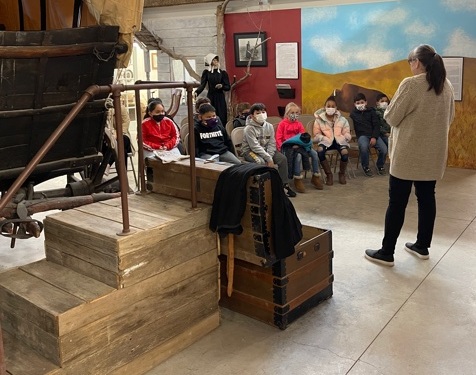
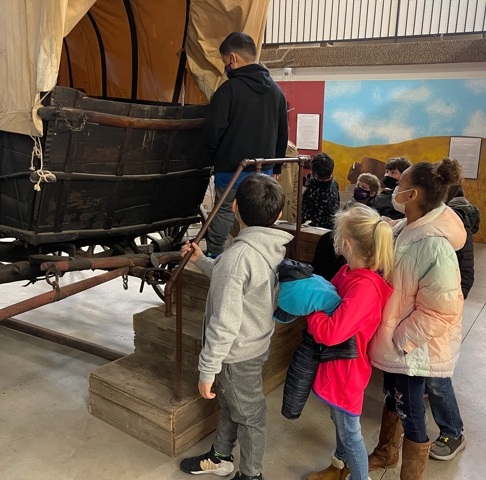
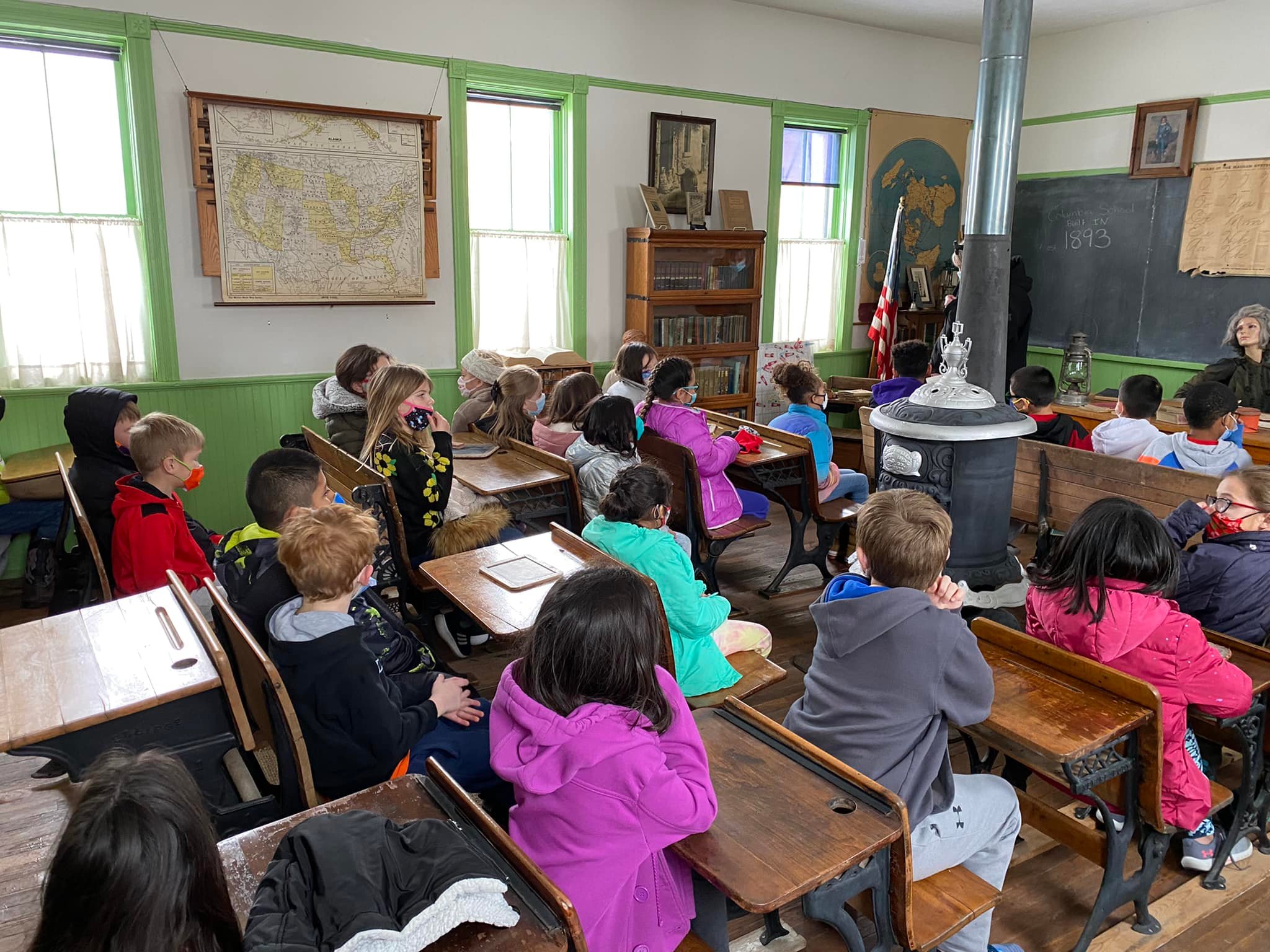
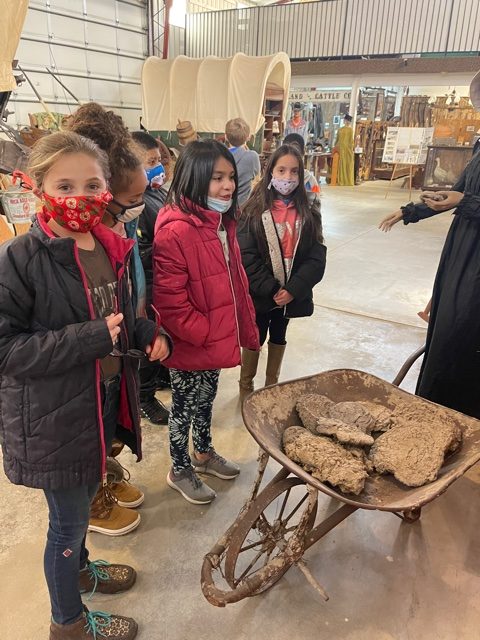
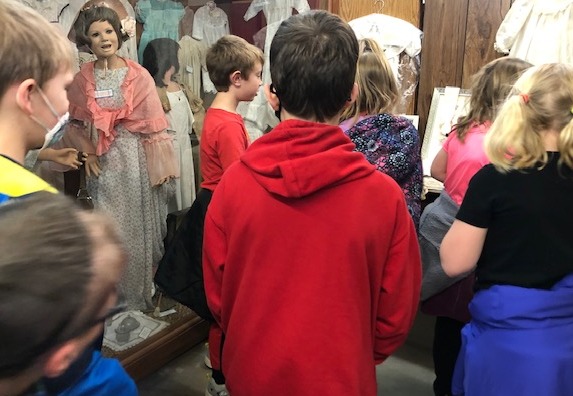
We are excited to announce that the military display has been re-opened to the public! This has been a special project taken on by Amy Fontenot, our Assistant Director. Amy served in the Army and Army Reserves so it was very important to her to make this exhibit as correct as possible. She spent countless hours researching and identifying our artifacts and cataloging them correctly in our system. Amy isn’t completely finished with the display but will tweak it as time allows.
The military display was moved to the ground floor in the Annex and includes artifacts from the Civil and Spanish Wars, World Wars I and II, Korean War and Vietnam War. Uniforms, Calvary saddles and bits, hard tack, mess kits, souvenirs brought from overseas, German artifacts, photographs and more fill the display cases. We invite you to come see all the wonderful artifacts that were so generously donated. We would also like to thank Rose Eatinger White for her generous donation and the families of Harold Williams, Earl Kleeman and Richard Landon for designating memorials to the museum which helped to fund the improvements.
Our veterans deserve nothing less than the best, and Amy has honored them both respectfully and beautifully.

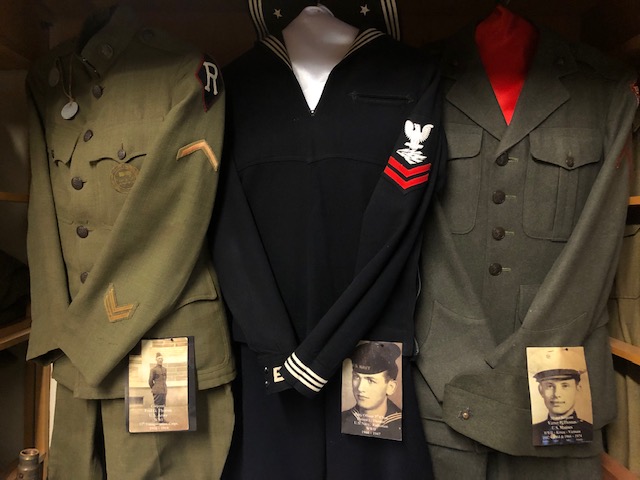
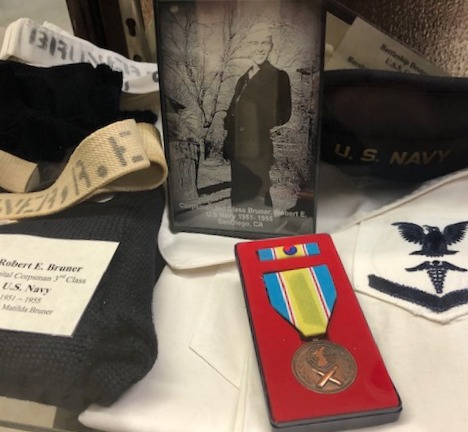
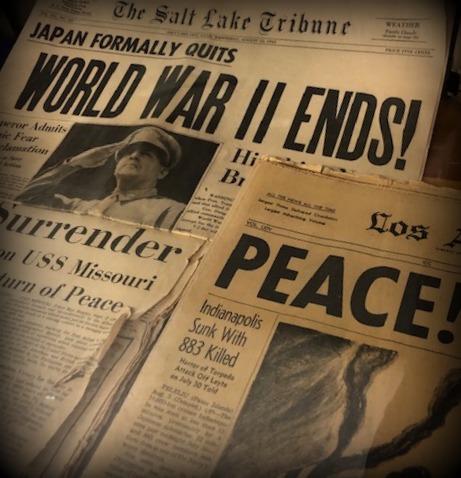

The winter of 1887-88, Veturia E. Boyd was hired to teach the Deerfield school. She boarded with Ada Oliver who lived 3/4 mile north of Deerfield. Miss Boyd walked back and forth to the school and was told by the school board never to send the children home during a blizzard. She was to keep them at the schoolhouse until help arrived.
During school hours on December 19, 1887, a blizzard unleashed all the fury it had gathered from Canada all the way down. By mid-afternoon, the school children had all been retrieved and Miss Boyd started for Miss Oliver’s place. But starting was about all she got done. For close to two hours, she walked around in circles and asked the good Lord for help. Eventually she gained a half mile and stumbled on the dugout door of a bachelor by the name of Dayton Loucks. Mr. Loucks heard a noise on his door and wondered what it was. He pried open the door, and in dropped Miss Boyd. Nobody knows which of the two were surprised the most.
Being a shy and modest woman, the young teacher sat in a chair in front of the fire all night while the blizzard was howling and dried the clothes right on her back. The next morning dawned bright and clear like short blizzards do. Miss Boyd thanked her host and walked a quarter mile south to the Neil Beckett place where Mrs. Beckett gave her some breakfast and a lunch to take to school. The schoolhouse was less than a quarter mile away. Miss Oliver, worried about her boarder who did not get home the night before, walke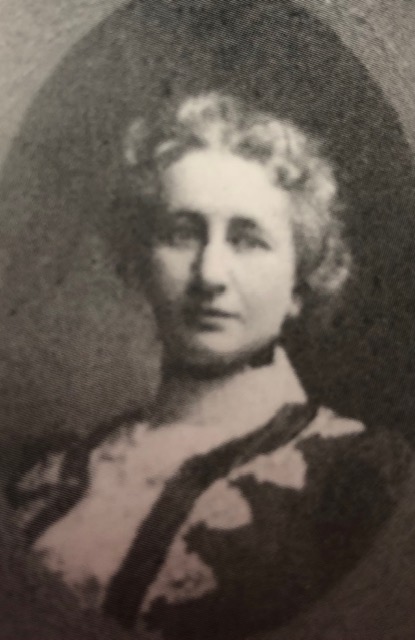 d to the schoolhouse. There she found Miss Boyd getting ready to take up school as usual.
d to the schoolhouse. There she found Miss Boyd getting ready to take up school as usual.
 Kearny County Historical Society is pleased to announce that Cary and Joyce Henderson were selected as this year’s King and Queen for the annual Christmas Parade on Dec. 4. Cary is a former KCHS board member and officer, serving from 2003 until last spring.
Kearny County Historical Society is pleased to announce that Cary and Joyce Henderson were selected as this year’s King and Queen for the annual Christmas Parade on Dec. 4. Cary is a former KCHS board member and officer, serving from 2003 until last spring.
The Hendersons moved to Lakin in 1980 when Cary went to work for Pioneer Communications, a job he retired from in 1999. The couple has two daughters, six grandchildren and 12 great-grandchildren.
Congratulations, Cary & Joyce!
By 1900, the Santa Fe Trail was already history. If asked to locate the Trail, very few people could do so. The Kansas Daughters of the American Revolution (DAR) set out to change that in 1902 with a plan to mark the old commerce route as a tribute to the brave pioneers who traversed it. “Those early travelers prized the old Trail as a road to the future, and we hope the people of years to come will use it and keep its early history in remembrance.”
The DAR enlisted the aid of maps, the knowledge of early settlers, the Kansas State Historical Society and some previously erected markers to trace the route of the SFT. At a Trail Committee meeting in 1905, the Daughters decided to ask the school children of Kansas to contribute a penny each toward the marking of the Trail since the funds appropriated by the State were not enough to pay for all the markers. On Kansas Day 1906, which was also designated as Trail Day, Lakin students brought their pennies to school, collecting around $2 towards the project.
In 1907, the DAR announced that 96 markers had been placed throughout Kansas. Kearny County’s markers arrived by rail in July of that year, and commissioners paid the expense of setting the five stones. Since Kearny County did not have a DAR chapter, County Clerk and Lakin pioneer F.L. Pierce gave prompt and efficient attention to the task of having the markers placed. One marker was erected in Deerfield in what is now the city park. In Lakin, one monument was set at the old courthouse at the corner of Main and Waterman. This marker was moved to the current courthouse in 1939. Another marker was placed at the site of the 1886 school just east of Buffalo Street but was moved to Lakin High School in 1961.
Hartland’s Main Street was the location of the fourth marker. As Hartland gradually disappeared, the marker was engulfed in weeds. Billy Carter was cultivating the ground and put a long chain around the marker and pulled it over to his house. Later the DAR Chapter of Garden City secured the assistance of the highway commission and had the marker moved to the River Road where it intersects the once Main Street of Hartland.
The final marker was placed between Lakin and Deerfield at Long Schoolhouse. For several years after the school closed, the marker remained where it was placed by the side of the highway. As the story goes, a young man who was opening a filling station in Lakin thought the marker would look good on the station grounds and brought it to Lakin. It is believed that this marker is the one that now sits atop Indian Mound and is pictured at the end of this article.
The dates for the SFT that the DAR had engraved on the markers (1822-1872) are a somewhat controversial topic among trail enthusiasts. The Santa Fe Trail Association recognizes the start of the trail as 1821 when William Becknell first ventured to Santa Fe and disposed of his trade goods. The Story of the
Marking of the Santa Fe Trail by the Daughters of the American Revolution in Kansas and the State of Kansas claims, “The earliest use of the Trail was in 1822, when a caravan left Boonville, Mo., by way of Lexington, Independence, Westport (now Kansas City, Mo.), thence in a southwesterly direction across the great State of Kansas, then only a desert and wilderness, and on to Santa Fe, New Mexico.” The DAR used 1872 because that it is the year that the Atchison, Topeka & Santa Fe Railroad was finished through Kansas, but many contend that the trail actually ended in 1880 when the railroad reached Santa Fe. In 1996, a plea was made in the quarterly newsletter of the Santa Fe Trail Association to press for historical accuracy, but the original engraved dates remain. Nonetheless, more important than the dates on the granite markers is the fact that had the Daughters not marked the historic route when they did, the location of the Santa Fe Trail could have been lost forever.
Sources: “The Story of the Marking of the Santa Fe Trail by the Daughters of the American Revolution in Kansas and the State of Kansas” by DAR Historian Mrs. T.A. Cordry, “History of Kearny County Kansas Vol. I”, Advocate archives from 1906, Kansapedia, Kansas State Historical Society, www.santafetrailresearch.com and www.dar.com.
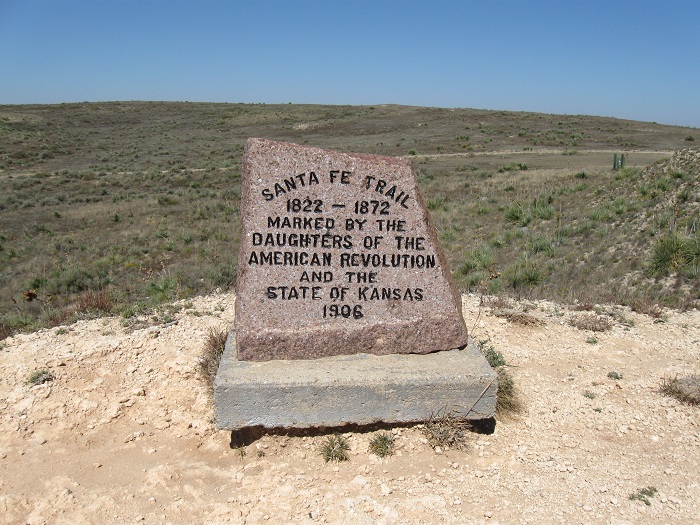
What Francis Aubry lacked in height, he made up for in grit. The 5’4” French Canadian was not only extremely energetic; he also loved a challenge. Born in Quebec, Aubry moved to St. Louis, Missouri, in 1843 at the age of 18. He clerked in a store for a while, but after seeing the profits available for merchants transporting goods along the Santa Fe Trail, the adventurous Aubry started his own freighting business. His first trip down the trail was in the spring of 1846. His wagon train traveled the approximate 800 miles from Independence to Santa Fe in 45 days which was a relatively quick trip in comparison to the other wagon trains who typically took a full two to three months. Aubry returned to Independence with enough profits to fully pay off the loans he had secured to go into business.
 The young horseman concluded that speed was the key to making the most of his freighting business. In the winter of 1847-48, he made the first of his three fast and famous rides. After arriving with a wagon train in Santa Fe in October, Aubry left on horseback December 22 with five others returning to Independence. He arrived alone at his destination in a little over 14 days, 10 days less than the previous record. The following March, Aubry again accompanied a wagon train to Santa Fe. He made the return trip to Independence that time in only eight days and 10 hours. The Independence Expositor claimed that Aubry had walked 40 miles of the trip after his horse went down and slept only four and a half hours.
The young horseman concluded that speed was the key to making the most of his freighting business. In the winter of 1847-48, he made the first of his three fast and famous rides. After arriving with a wagon train in Santa Fe in October, Aubry left on horseback December 22 with five others returning to Independence. He arrived alone at his destination in a little over 14 days, 10 days less than the previous record. The following March, Aubry again accompanied a wagon train to Santa Fe. He made the return trip to Independence that time in only eight days and 10 hours. The Independence Expositor claimed that Aubry had walked 40 miles of the trip after his horse went down and slept only four and a half hours.
Aubry’s reputation for fast riding was gaining him recognition, and a $1,000 bet enticed him to carve even more time off his record. Aubry departed Santa Fe on September 12, 1948, with fresh horses having been positioned at several points along the route. When he swapped mounts for his favorite mare, Dolly, Aubry gulped down a quart of boiling coffee and was last seen riding away with a hunk of broiled buffalo meat in his hand. When he got to the place where he was to exchange Dolly for a fresh ride, there were no horses to be found, only a scalped, lifeless man. He had no choice but to continue on his favorite steed. Some reports say Dolly carried him 200 miles in 26 hours until he ran into a wagon train and got a fresh horse from the wagonmaster who promised to take Dolly back to Santa Fe. Aubry reached Independence in five days and 16 hours. On his arrival, he was helped from his horse and carried into a local hotel, his saddle soaked in blood and his thighs raw from riding. Aubry had broke down six horses on his journey. Having only slept two and a half hours and eating only six meals, the exhausted explorer strapped himself into the saddle for the last 40 hours of the trip. Aubry’s record still stands over 170 years later and garnered him nicknames such as Skimmer of the Plains and Telegraph Aubry. His freighting business, which benefited from his reputation for speed, ultimately became dubbed as the Lightning Express.
Convinced that there must be a better route for wagon trains between the Arkansas River and the Cimarron Route, Aubry set out to find a shortcut. In late 1851, he discovered a detour that became known as the Aubry Cutoff or Aubry Route. This shortcut not only saved time but was also safer and offered more water, wood and areas for grazing. Because it is thought that Aubry traveled the Bear Creek Pass on one of his quick rides, the Aubry Route has been confused with the Bear Creek Pass that connected the Upper Crossing at Chouteau’s Island to Wagon Bed Springs. In fact, area historian India Harris Simmons wrote a series of articles on the Aubry Route in the early 1900s saying as much, and a map from the History of Kearny County Volume 1 also labeled the Aubry Cutoff as the route from Chouteau’s Island to Wagon Bed Springs. That route was marked when the trail was surveyed back in the 1820s, but has been debunked as the Aubry Route.
Aubry’s Route followed the trail westward along the Arkansas River. Instead of turning south at Chouteau’s Island, it continued to a point about 12 to 15 miles above the island. The route then angled through Hamilton and Stanton Counties in Kansas and Baca County, Colorado before reaching Cold Springs in the Oklahoma Panhandle where it joined up with the Cimarron Route. According to noted trail scholar and author Leo Oliva, Aubry gave an early description of the Aubry Route to Brevet Captain S.B. Buckner, the commanding officer at Fort Atkinson. This description and a sketch map were forwarded to Fort Leavenworth. Military and stage lines used Aubry’s Route as early as 1852.
Until 1988, scholars believed that Aubry’s cut-off began at the site of Fort Aubrey, a military camp based in Hamilton County from 1865 to 1866. However, upon examining the rough terrain and sandhills in this area, Oliva and his wife came to the conclusion that the freighters would not have tried to plow through the rough sandhills south of Fort Aubrey. The route would have been used for a horse trail and nothing more; however, three miles to the east, fine sharp ruts were found for several miles south of the river which puts the wagon crossing for Aubry’s Route closer to Kendall.
The spirited and daring Aubry died in August of 1854 from a stab wound sustained in a fight with an Albuquerque newspaper publisher. Aubry took offense to a story Hanson Weightman ran about him which led to a confrontation between the two men. Aubry drew a pistol which prematurely discharged, the bullet hitting the ceiling. When Weightman saw Aubry draw his gun, he drew a bowie knife and before Aubry had time to bring his pistol down and fire a second time, Weightman stabbed him in the abdomen. The 29-year-old Aubry had made the most of his short life, securing his place in history not only for his speed and endurance but also for trailblazing the Aubry Route which continued to be used for nearly 20 years after his death.
Sources: “The Aubry Route of the Santa Fe Trail” by Leo E. Oliva, “The Santa Fe Trail Revisited” and “Maps of the Santa Fe Trail” by Gregory M. Franzwa, “The Fantastic Ride of F.X. Aubry” by David Dary, “Seattle Man Rides a Trail that leads back to 1848” by Erik Lacitis, archives of the Kansas Weekly Herald, Saturday Morning Visitor and Kansas City Star, History of Kearny County Vol. I, santafetrailresearch.com, legendsofamerica.com, The Santa Fe Trail Association and the National Park Service.